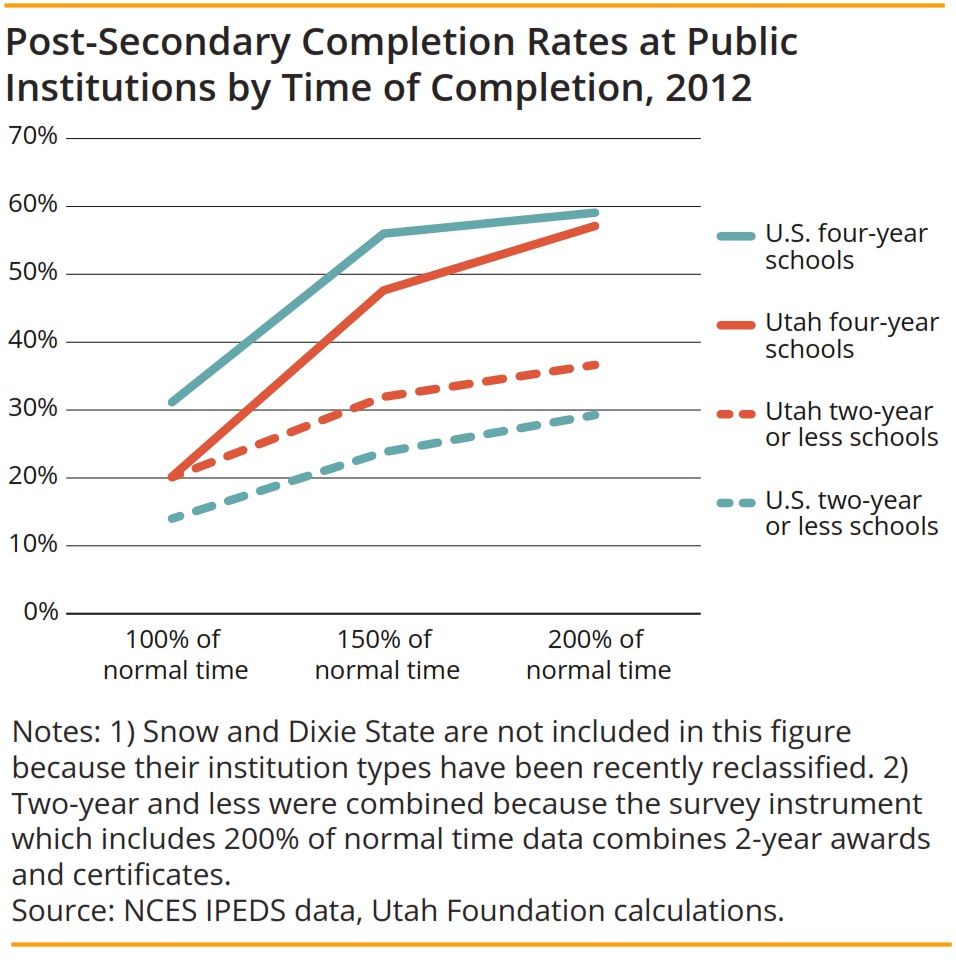What are the goals of Utah’s colleges and universities? How do these goals align with the goals of the state? This report provides an overview of higher education success measures, the barriers to reaching them, and the costs of failure. The report then analyzes how some of the biggest “game changers” for success are implemented in Utah, with a particular emphasis on performance funding. As opposed to funding higher education based upon enrollment, performance funding is allocated based upon the success of certain outcomes, such as graduation rates, campus diversity, and students persistence. While Utah Foundation is not recommending a specific course of action for Utah, the lessons learned by other states that have implemented performance funding are instructive:
- Collaborate with all stakeholders to develop the performance funding model.
- Utilize overall outcomes (or results) as performance measures, not annual goals.
- Ensure that the outcome measures – and the funding model itself – are simple, but are specific to institutional missions.
- Put enough funding at stake to truly incentivize outcomes.
HIGHLIGHTS
- Utah’s graduation rate delay is not due to the “missionary effect” or military service; students who leave for official church missions or military service are not included in the graduation rate calculation.
- Utah’s public two-year institutions have higher completion rates than the nation.
- When adjusted for inflation, the cost of educating students at public colleges and universities has not increased in the past 20 years; there is simply a cost shift from the government to students in Utah and across the U.S.
- Nationally, the post-secondary education access agenda has shifted to include a completion agenda.
- Half of the states have begun to employ performance funding to affect completion rates.
- Utah directs less than 0.1% of higher education funds to performance funding.


